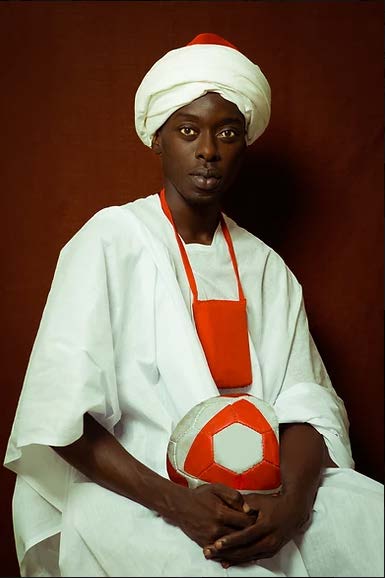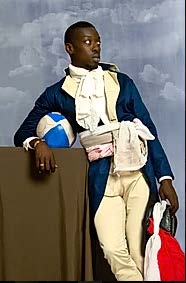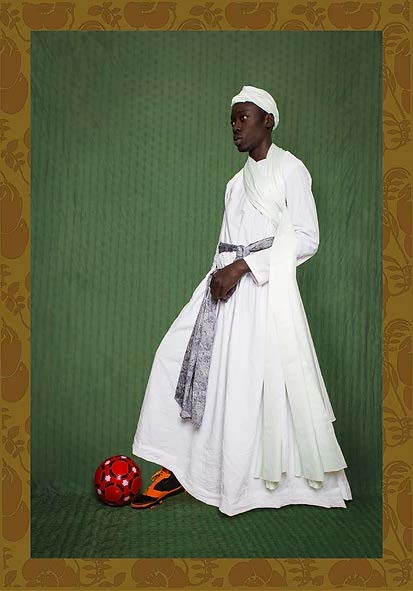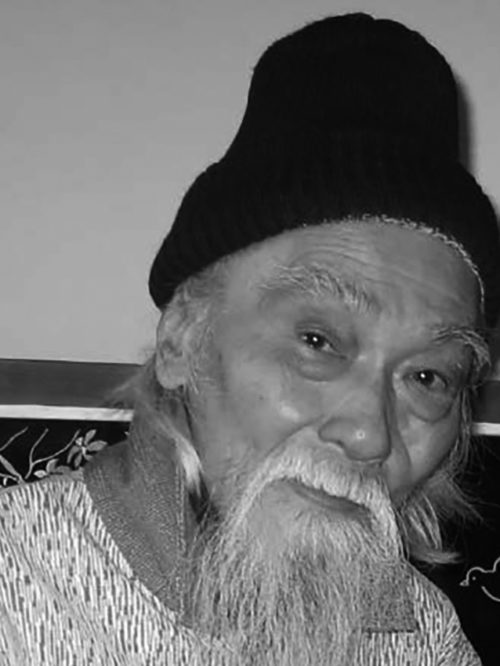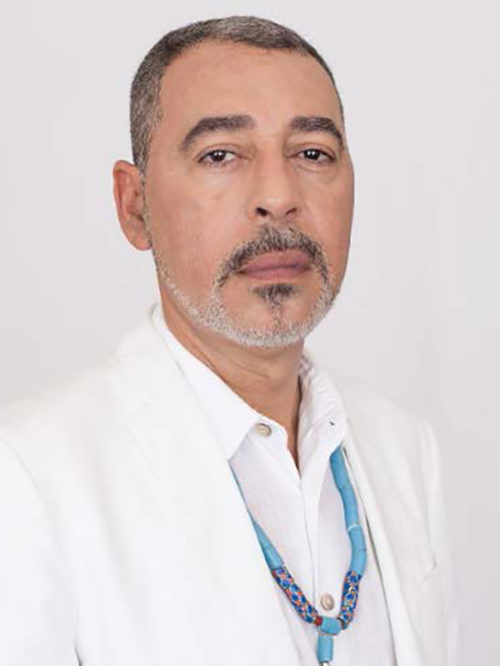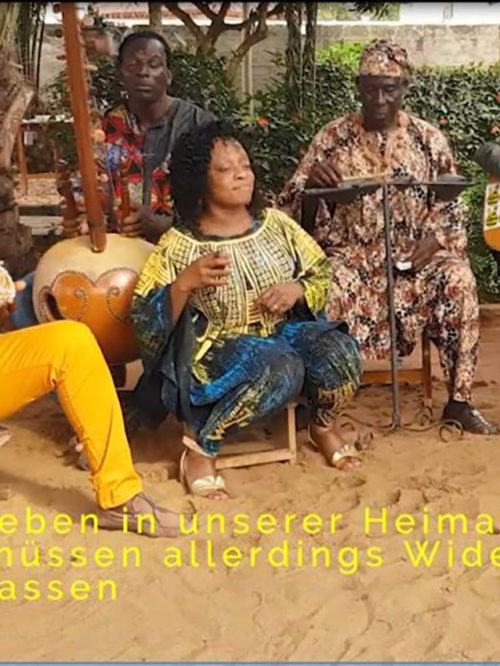Omar Victor Diop
Project Diaspora, 2015
Magnin-A Gallery
“It started with me wanting to look at these historical black figures who did not fulfil the usual expectations of the African diaspora insofar as they were educated, stylish and confident, even if some of them were owned by white people and treated as the exotic other. I wanted to bring these rich historical characters into the current conversation about the African diaspora and contemporary issues around immigration, integration and acceptance.”
Omar Victor Diop
In the photo essay “Project Diaspora”, Senegalese photographer Omar Victor Diop brings together forgotten personalities of the Black Diaspora who lived between the 15th and 19th centuries. The staged studio portraits of the 18-part series allude to historical representations from Europe and Asia. The protagonists Diop selected for his portraits had achieved renown as diplomats, thinkers, artists, warriors and liberated former slaves. Their extraordinary biographies point to crucial episodes of Black resistance that have received too little attention in official historiography.
Through idiosyncratic references to football culture, Diop transports the significance of iconic images into the present. He thus refers to the stereotypical representation of Black men in the popular media, which is associated, as he puts it, with “a very interesting blend of glory, hero-worship and exclusion”. Although Diop appears in the photos, they are not self-portraits in the traditional sense. Rather, the artist and fashion photographer uses himself as an object facing the lens while retaining control over representation – a power that was only partially available to the subjects in their historical context.
Project Diaspora, 2015, Photo print on Alu-Dibond, [from left to right]
Olaudah Equiano
Oloudah Equiano (1745-1797), known in his lifetime as Gustavus Vassa, was a freed slave who supported the British movement to end the slave trade. His autobiography, The Interesting Narrative of the Life of Olaudah Equiano, or, Gustavus Vassa, the African, Written by Himself (1789), narrating his life in slavery, attracted much attention. It was considered highly influential in the passage of the Slave Trade Act 1807, which ended the trade with African slaves for Britain and its colonies.
Jean-Baptiste Belley
Jean-Baptiste Belley (1746-1805) was a native of Senegal (island of Gorée) and a former slave from Saint-Domingue (now Haiti) who bought his freedom with his savings. During the French Revolution, he became a member of the National Convention and the Council of the Five Hundred of France – and thus one of the first people of African descent to hold national elective office in the new French Republic. There, he campaigned for the abolition of slavery.
Ayuba Suleiman Diallo
Ayuba Suleiman Diallo (1701-73), also known as Job ben Solomon, was a Muslim victim of transatlantic slave trade. Diallo was born in Bundu (part of what is now Senegal), and his published memoirs were one of the earliest first-hand accounts of slave trade. He was enslaved in Maryland for about two years; then, in 1734, taken to England, freed and sent to his homeland.
Dom Nicolau
Dom Nicolau (c. 1830-60), Prince of Congo, was perhaps the earliest African leader to write publicly to protest colonial influences. Nicolau published a letter against Portuguese commercial and political activities and military expansion in a Lisbon newspaper.
Pedro Camejo
Pedro Camejo (1790-1821) was a victim of the transatlantic slave trade. He fought as a cavalry lieutenant in the Liberation Army during the Venezuelan War of Independence. There, he was nicknamed “El Negro Primero”, being the only Black officer among Simon Bolívar’s troops. Rising from slave to cavalry officer, Camejo is a symbol of upward mobility and the identification figure for the many Blacks who fought in Venezuela’s War of Independence for their own freedom and that of the colony.
Malick Ambar
Malick Ambar (1548-1626) was an Ethiopian born in Harar whose destitute parents were moved to sell him. He was taken to India, where he eventually rose to become a highly respected Prime Minister of the Ahmednagar Sultanate, proving his administrative acumen in various fields.
Omar Victor Diop (born in 1980 in Dakar, Senegal/ lives and works in Paris, France) is a photographer who focuses on combining photography and design to capture the diversity of modern African societies and lifestyles. His body of work includes fine art, fashion and commercial photography. He loves to mix his photographs with other art forms such as costume design, styling and creative writing. His works are controversial and intriguing, forward-thinking and inspired by historical visual traditions, as well as his African visual heritage.
→omar viktor
Omar Victor Diop
Ayuba Suleiman Diallo, 2015
From the series: Project Diaspora
Pigment inkjet photography | 120 x 80 cm
Courtesy: Magnin-A Gallery
Omar Victor Diop
Dom Nicolau, 2015
From the series: Project Diaspora
Pigment inkjet photography | 120 x 80 cm
Courtesy: Magnin-A Gallery
Omar Victor Diop
Malick Ambar, 2015
From the series: Project Diaspora
Pigment inkjet photography | 120 x 80 cm
Courtesy: Magnin-A Gallery
Omar Victor Diop
Olaudah Equiano, 2015
From the series: Project Diaspora
Pigment inkjet photography | 120 x 80 cm
Courtesy: Magnin-A Gallery
Omar Victor Diop
Pedro Camejo, 2015
From the series: Project Diaspora
Pigment inkjet photography | 120 x 80 cm
Courtesy: Magnin-A Gallery


